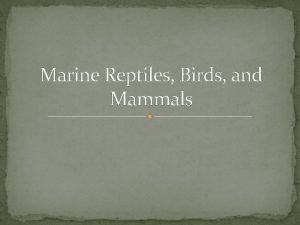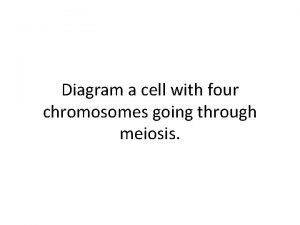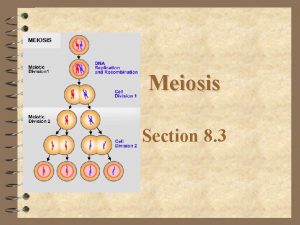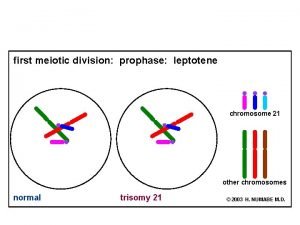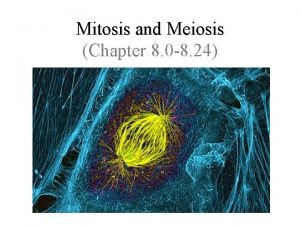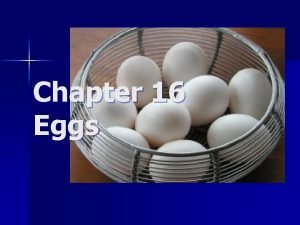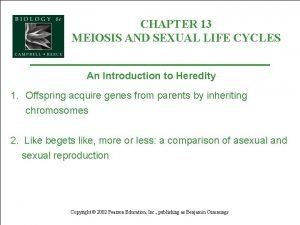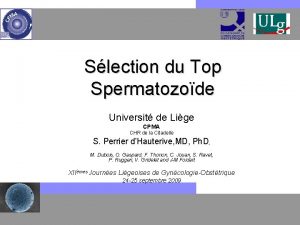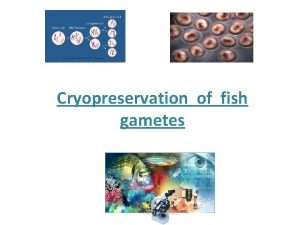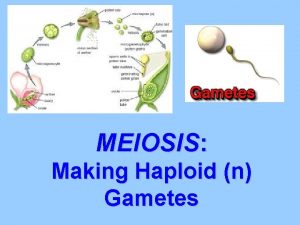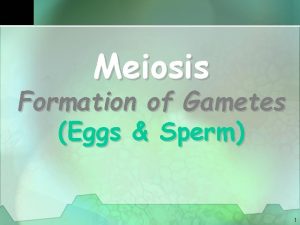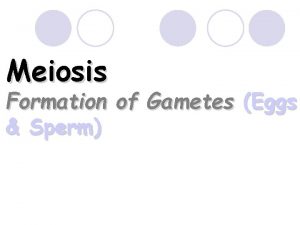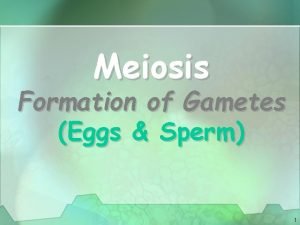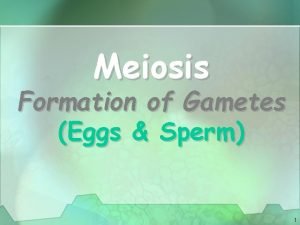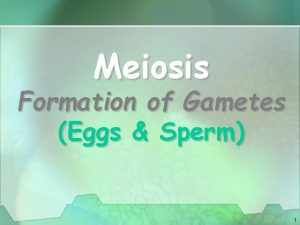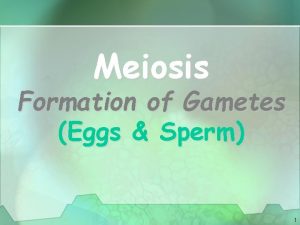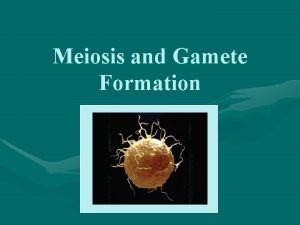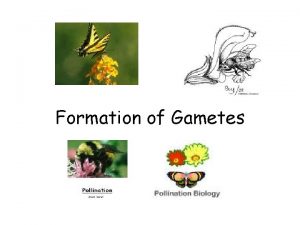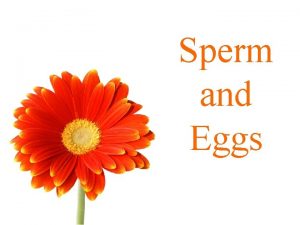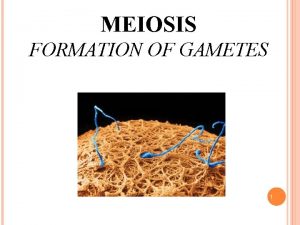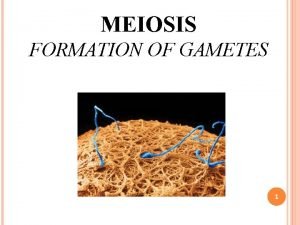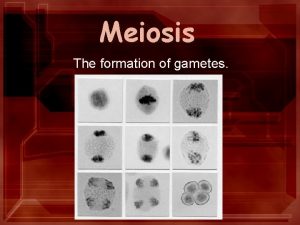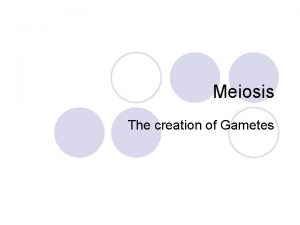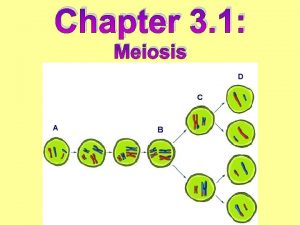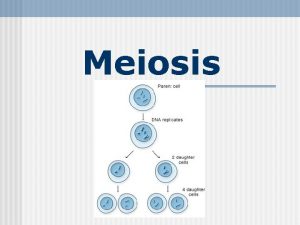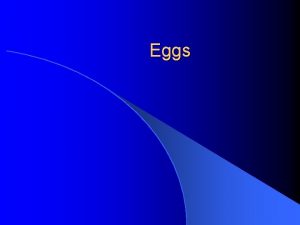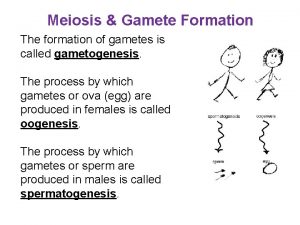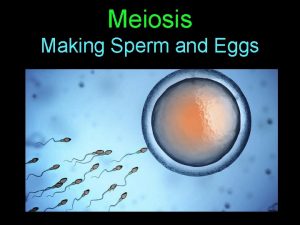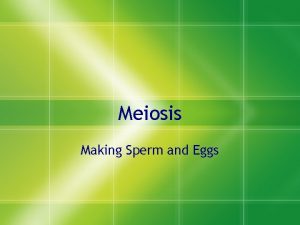Meiosis Formation of Gametes Eggs Sperm 1 Sexual
























- Slides: 24

Meiosis Formation of Gametes (Eggs & Sperm) 1

Sexual Reproduction üSexual Reproduction - two cells (egg & sperm) that are NOT identical to the original cells unite to form a zygote Eg. Meiosis 2

Facts About Meiosis ü Daughter cells contain half the number of chromosomes as the original cell ü Produces gametes (eggs & sperm) ü Occurs in the testes in males (Spermatogenesis) ü Occurs in the ovaries in females (Oogenesis) 3

Why do we need Meiosis? Fertilization! Two haploid (1 n) gametes are brought together through fertilization to form a diploid (2 n) zygote 2 n = 6 1 n =3 4

Meiosis Forms Haploid Gametes ü Meiosis must reduce the chromosome number by half ü Fertilization then restores the 2 n number from mom from dad child too much! meiosis reduces genetic content The right number! 5

Replication of Chromosomes ü Replicated copies are called sister Occurs in chromatids ü Held together at centromere s Interphase Homolog 6

Meiosis. flv > 7

Meiosis: Two Part Cell Division Sister chromatids separate Homologs separate Meiosis II Diploid Haploid 8

Meiosis I: Reduction Division Nucleus Early Late Prophase I (Chromosome Prophase I number doubled) Spindle fibers Nuclear envelope Metaphase Anaphase Telophase I I I (diploid) 9

Prophase I üHomologs pair üCrossing over üSpindle forms üNuclear envelope fragments. 10

Crossing-Over Crossing-over multiplies the already huge number of different gamete types produced by independent assortment 11

Homologous Chromosomes During Crossing-Over 12

Metaphase I Homologous pairs of chromosomes align along the equator of the cell 13

Anaphase I Homologs separate and move to opposite poles. Sister chromatids remain attached at their centromeres. 14

Telophase I Nuclear envelopes reassemble. Spindle disappears. Cytokinesis divides cell into two. 15

Meiosis II: Reducing Chromosome Number Prophase Metaphase II Telophase II Anaphase II II 4 haploid cells 16

Prophase II Nuclear envelope fragments. Spindle forms. 17

Metaphase II Chromosomes align along equator of cell. 18

Anaphase II Equator Pole Sister chromatids separate and move to opposite poles. 19

Telophase II Nuclear envelope assembles. Spindle disappears. Cytokinesis divides cell into two. 20

Results of Meiosis Gametes (egg & sperm) form Four haploid cells with one copy of each chromosome Different combinations of genes along the chromosome 21

Comparison of Divisions Mitosis Number of divisions Number of daughter cells Genetically identical? 1 Meiosis 2 2 4 Yes No Same as parent Half of parent Where Body cells Sex cells When Throughout life At sexual maturity Growth and repair Sexual reproduction Chromosome # Role 22

Vocabulary • Gametes – eggs and sperm • Zygote – a fertilized egg • Diploid – full number of chromosomes • Haploid – half the number of chromosomes • Embryo – early stage of development • Crossing over - the exchange of genetic material between homologs • Homologs – chromosome pairs that are similar (in length, gene position and centromere location) 23

Downloadsmeiosis square dancing 2. flv 24
 Killer whale eating sea lion
Killer whale eating sea lion Diagram a cell with four chromosomes going through meiosis
Diagram a cell with four chromosomes going through meiosis Meiosis square dance
Meiosis square dance Section 8-3 meiosis
Section 8-3 meiosis Meiosis makes gametes
Meiosis makes gametes What is the purpose of mitosis?
What is the purpose of mitosis? Chapter 17 eggs selecting and storing eggs
Chapter 17 eggs selecting and storing eggs виды проектов
виды проектов Chapter 13 meiosis and sexual life cycles
Chapter 13 meiosis and sexual life cycles Section 1 meiosis
Section 1 meiosis Chapter 10 section 3 gene linkage and polyploidy
Chapter 10 section 3 gene linkage and polyploidy Meiosis 1 and 2
Meiosis 1 and 2 Meiosis introduction activity
Meiosis introduction activity Crossing over during prophase 1
Crossing over during prophase 1 Oogensis
Oogensis Chromosome disability
Chromosome disability Anaphase meiosis vs mitosis
Anaphase meiosis vs mitosis Chapter 10 section 1 meiosis answer key
Chapter 10 section 1 meiosis answer key Rencontre des gamètes
Rencontre des gamètes Haploid
Haploid Dihybrid
Dihybrid Urinary system facts
Urinary system facts Cryopreservation of fish gametes
Cryopreservation of fish gametes Gametes
Gametes Somatic vs gamete
Somatic vs gamete
